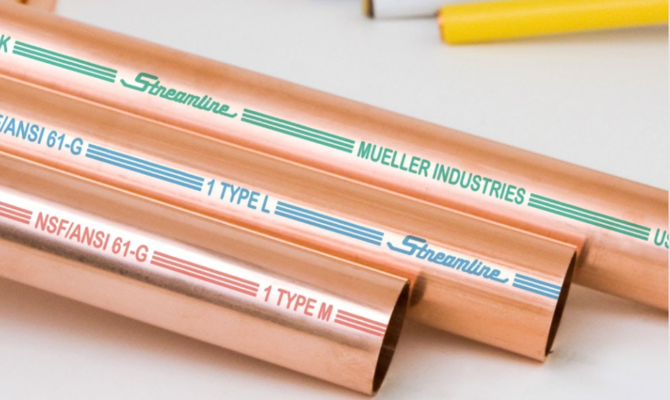
Older structures typically use water pipes made from iron, steel or lead. While the dangers of lead pipe for drinking water especially are a no-brainer, you may be wondering what the buzz about modern-day copper pipe is about. For commercial work, copper pipe should be considered in place of iron and steel. The benefits of copper pipe make it a must-have for any job.
Let’s start with aesthetics. Plain and simple – copper pipe just looks good. In addition to being pleasing to the eye, it’s also low maintenance, because copper doesn’t require painting to protect it from corrosion. Additionally, it’s extremely malleable, meaning it can be adjusted to various shapes and sizes, making installation simple.
The end user benefits from copper pipe being installed in their building as well. While a bit more expensive than PVC, it’s durable and requires less maintenance, meaning a lower overall cost for the customer.
Copper pipe has some material benefits too. It’s non-toxic and is capable of delivering pure drinking water because it’s naturally biostatic and impermeable – this means that it doesn’t absorb any unwanted contaminants. It also prevents the growth of harmful bacteria, and in the event of a fire, it won’t carry fire through walls, ceilings or floors. It can withstand extreme heat – the melting point of copper is 2,000°F.
There are some disadvantages to copper pipe that you may want to consider when coordinating your next pipe project. While it’s a reliable and durable material, it’s also susceptible to corrosion from acidic water. Cost is also something to think about – the customer will pay more for copper pipe than they would for plastic pipe. However, the long-term benefits of copper pipe tend to outweigh the disadvantages.
Looking for a place to source pipe for your next job? All-Tex offers a full range of pipe products, as well as assistance throughout the entire process to help you find the best material for your needs.
